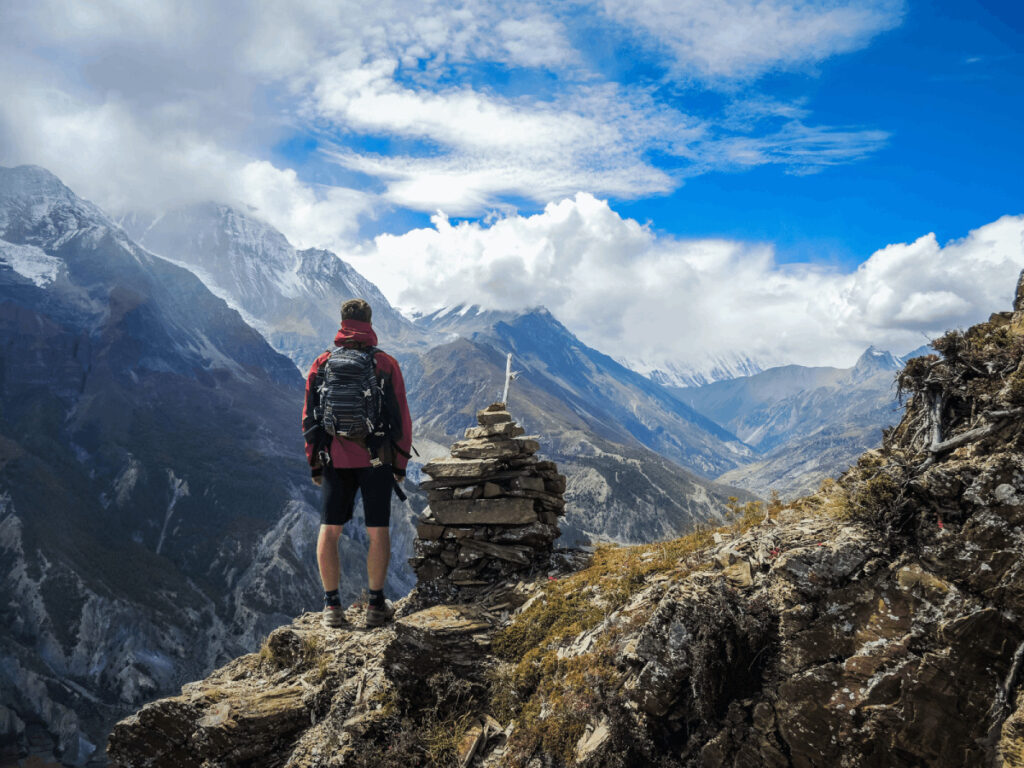Mountaineering is a popular outdoor activity that involves ascending mountains, typically for recreational or competitive purposes. It is an adventurous and physically demanding sport that requires specialized equipment, physical fitness, technical skills, and mental toughness. In this article, we will provide a comprehensive guide on mountaineering, including its history, types, techniques, gear, risks, and benefits.

History of Mountaineering
Mountaineering has been practiced for centuries, but it was not until the 19th century that it became a popular recreational activity. In 1786, Michel-Gabriel Paccard and Jacques Balmat made the first ascent of Mont Blanc, the highest peak in the Alps. This achievement marked the beginning of modern mountaineering.
During the 19th and early 20th centuries, mountaineering became a popular pursuit among the upper classes in Europe and America. Many mountaineering clubs were formed, and new peaks were conquered. In 1953, Sir Edmund Hillary and Tenzing Norgay made the first successful ascent of Mount Everest, the highest peak in the world. This achievement inspired a new generation of mountaineers and cemented the sport’s place in popular culture.
Types of Mountaineering
Mountaineering can be divided into several types, depending on the terrain, difficulty, and objectives. Here are some of the most common types of mountaineering:
1. Rock Climbing
Rock climbing involves ascending steep rock faces using specialized climbing techniques and equipment. It can be done both indoors and outdoors and ranges in difficulty from easy to extremely challenging. Rock climbing can be done as a single-pitch climb or a multi-pitch climb, depending on the length of the route.
2. Ice Climbing
Ice climbing involves ascending frozen waterfalls, glaciers, and other ice formations using ice axes, crampons, and other specialized equipment. It is a physically demanding and technical sport that requires a high level of skill and experience. Ice climbing can be done as a single-pitch climb or a multi-pitch climb, depending on the length of the route.
3. Alpine Climbing
Alpine climbing involves ascending high-altitude peaks using a combination of rock climbing, ice climbing, and other mountaineering techniques. It is a physically demanding and technical sport that requires a high level of skill and experience. Alpine climbing is often done as a multi-day expedition and requires specialized equipment and clothing.
4. Expedition Climbing
Expedition climbing involves ascending the highest peaks in the world, such as Mount Everest, K2, and Denali. It is a physically demanding and dangerous sport that requires a high level of skill, experience, and preparation. Expedition climbing can take several weeks or months and requires specialized equipment and support teams.
Essential Techniques in Mountaineering
Mountaineering requires a range of technical skills, including rope management, knot tying, belaying, anchoring, and climbing moves. Here’s an overview of some of the essential techniques in mountaineering:
1. Rope Management
Rope management is the process of managing the rope during a climb to ensure safety and efficiency. It involves techniques such as coiling, flaking, and tying knots.
2. Knot Tying
Knot tying is an essential skill in mountaineering as it allows climbers to attach themselves to the rope, anchor themselves to the rock, and secure gear. Some of the most common knots used in mountaineering include the figure-eight knot, bowline knot, and clove hitch knot.
3. Belaying
Belaying is the process of controlling the rope to protect the climber in case of a fall. It involves using a device such as a belay device or a Munter hitch to create friction on the rope.
4. Anchoring
Anchoring involves attaching oneself to the rock or the ice using specialized equipment such as bolts, pitons, and ice screws. It is an essential skill in mountaineering as it allows climbers to protect themselves in case of a fall.
5. Climbing Moves
Climbing moves are the techniques used to ascend the rock or the ice. They include techniques such as smearing, edging, jamming, and stemming. Climbing moves require a combination of strength, balance, and technique.
Gear for Mountaineering
Mountaineering requires specialized gear to ensure safety and comfort during the climb. Here’s an overview of some of the essential gear for mountaineering:
1. Clothing
Mountaineering clothing must be warm, waterproof, and breathable to protect the climber from the cold, wind, and precipitation. Some of the essential clothing items for mountaineering include a base layer, a mid-layer, a shell layer, and insulated jackets and pants.
2. Footwear
Mountaineering footwear must be warm, waterproof, and durable to provide traction on the rock or the ice. Some of the essential footwear items for mountaineering include mountaineering boots, crampons, and gaiters.
3. Climbing Equipment
Mountaineering equipment includes specialized gear such as ropes, harnesses, helmets, carabiners, and cams. It is essential to choose the right gear for the type of climbing and the terrain.
Risks and Benefits of Mountaineering
Mountaineering is a dangerous sport that involves several risks, including altitude sickness, hypothermia, falls, and avalanches. Mountaineering offers several benefits, including physical fitness, mental toughness, and the opportunity to explore and experience the beauty of nature.
Conclusion
Mountaineering is a challenging and rewarding sport that requires physical fitness, technical skills, and mental toughness. It offers the opportunity to explore and experience the beauty of nature while improving physical and mental health. However, it also involves several risks, and it is essential to have proper training, equipment, and preparation to stay safe. With the right skills and gear, mountaineering can be a fulfilling and unforgettable experience.



